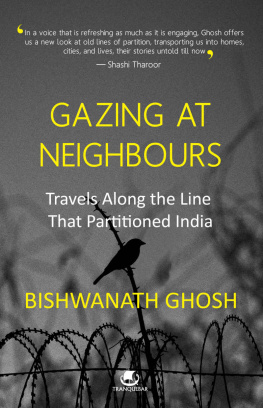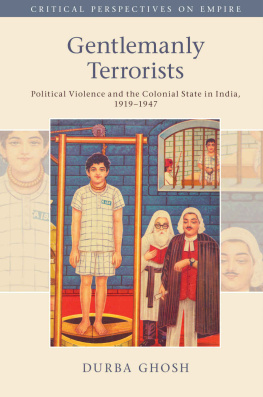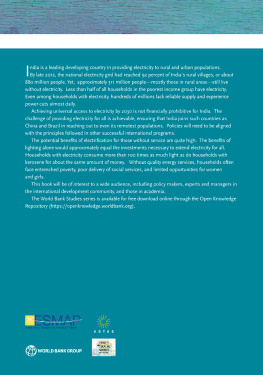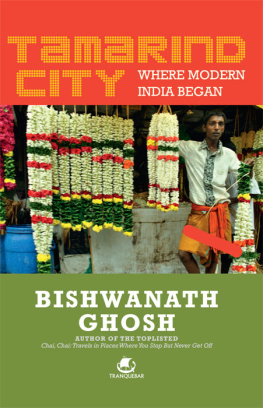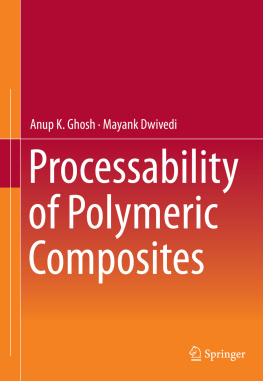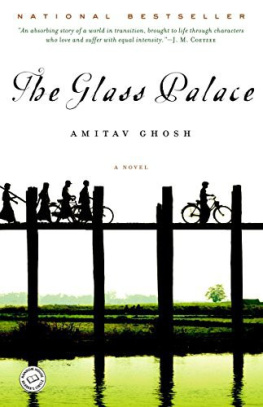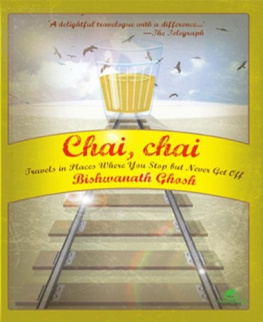Bishwanath Ghosh - Gazing at Neighbours: Travels Along the Line That Partitioned India
Here you can read online Bishwanath Ghosh - Gazing at Neighbours: Travels Along the Line That Partitioned India full text of the book (entire story) in english for free. Download pdf and epub, get meaning, cover and reviews about this ebook. year: 2017, publisher: Tranquebar, genre: Detective and thriller. Description of the work, (preface) as well as reviews are available. Best literature library LitArk.com created for fans of good reading and offers a wide selection of genres:
Romance novel
Science fiction
Adventure
Detective
Science
History
Home and family
Prose
Art
Politics
Computer
Non-fiction
Religion
Business
Children
Humor
Choose a favorite category and find really read worthwhile books. Enjoy immersion in the world of imagination, feel the emotions of the characters or learn something new for yourself, make an fascinating discovery.
- Book:Gazing at Neighbours: Travels Along the Line That Partitioned India
- Author:
- Publisher:Tranquebar
- Genre:
- Year:2017
- Rating:4 / 5
- Favourites:Add to favourites
- Your mark:
- 80
- 1
- 2
- 3
- 4
- 5
Gazing at Neighbours: Travels Along the Line That Partitioned India: summary, description and annotation
We offer to read an annotation, description, summary or preface (depends on what the author of the book "Gazing at Neighbours: Travels Along the Line That Partitioned India" wrote himself). If you haven't found the necessary information about the book — write in the comments, we will try to find it.
Gazing at Neighbours: Travels Along the Line That Partitioned India — read online for free the complete book (whole text) full work
Below is the text of the book, divided by pages. System saving the place of the last page read, allows you to conveniently read the book "Gazing at Neighbours: Travels Along the Line That Partitioned India" online for free, without having to search again every time where you left off. Put a bookmark, and you can go to the page where you finished reading at any time.
Font size:
Interval:
Bookmark:
TRANQUEBAR PRESS
GAZING AT NEIGHBOURS: TRAVELS ALONG THE LINE THAT PARTITIONED INDIA
Bishwanath Ghosh, born in December 1970 in Kanpur, is the author of the hugely popular Chai, Chai: Travels in Places Where You Stop but Never Get Off , which was his first book, Tamarind City: Where Modern India Began , and Longing, Belonging: An Outsider at Home in Calcutta . He currently lives in Chennai, where he works as an Associate Editor with The Hindu .
OTHER TITLES BY BISHWANATH GHOSH
Chai, Chai: Travels in Places Where You Stop but Never Get Off
Tamarind City: Where Modern India Began
Longing, Belonging: An Outsider at Home in Calcutta

TRANQUEBAR PRESS
61, II Floor, Silverline Building, Alapakkam Main Road, Maduravoyal, Chennai 600095
93, I Floor, Sham Lal Road, Daryaganj, New Delhi 110002
First published in TRANQUEBAR PRESS by westland publications ltd. 2017
Copyright Bishwanath Ghosh 2017
All rights reserved
10 9 8 7 6 5 4 3 2 1
ISBN: 9789386224989
Typeset in Adobe Caslon Pro by SRYA, New Delhi
This book is sold subject to the condition that it shall not by way of trade or otherwise, be lent, resold, hired out, circulated, and no reproduction in any form, in whole or in part (except for brief quotations in critical articles or reviews) may be made without written permission of the publishers.
For
Tarun Gautam
Q. Rumman Dastgir
Lakshya Mehta
in friendship
Contents
Prologue
No other seemingly benign exercise has such far-reaching consequences as drawing a line on a map. On the face of it, you merely put pencil to paper, but the line actually runs through towns, villages, valleys, farmlands, forests, rivers, pondsand people.
Sometimes those assigned to run the pencil do so, without realising the impact their line is going to have on humankind. Sir Cyril Radcliffe was one of them.
Sir Cyril had built a formidable reputation in Britain as a barrister before he went down in history as probably the worlds most infamous cartographer. In July 1947, he was summoned to New Delhi and given five weeks to partition India. Accordingly, he drew two lines on its map. One of the lines, 553 kilometres long, created the province of West Punjab; the other, 4,096 kilometres long, carved out a province called East Bengal. They both joined the newborn nation of Pakistanan event that saw fifteen million people displaced and over one million dead.
An equally horrifying number of people were killed and many hundreds of thousands of women raped in 1971 when East Bengal, rechristened East Pakistan in 1956, fought to free itself from Pakistan and became an independent nation called Bangladeshbut thats a different story.
By the time I was borna day after the Christmas of 1970, in the city of KanpurIndia had already been partitioned for nearly a quarter of a century. But in spite of being comfortably insulated from the event by time and distance, I grew up amidst constant reminders that something terrible called Partition had happened.
I grew up in a neighbourhood not very far from the banks of the Ganga, and in the market nearest to our home nearly all the shops were owned by Punjabis who had been uprooted from what had become Pakistan. They were seen as trespassers and not one of us: us being the people who, unlike them, had willingly migrated (as opposed to being driven away) to Kanpur, from other parts of India (as opposed to Pakistan) in search of a living. To be driven out of your home was a matter of shame.
One eveningI must have been around sixteen thena classmate and I were out on a stroll in that market when he drew my attention to a popular electronics shop: You see that old man at the cash counter? He came penniless from Pakistan and used to repair punctures for a living. Today he owns that bloody shop!
Looking back, I understand the resentment. A penniless refugee, who once fixed punctures in bicycle tyres, had become prosperous, whereas our fathers, who were never penniless, still earned only a fraction of what he now made every month.
Today if I were to walk through the same marketI still do once in a while when I visit homeI would look at the old man with respect, bearing in mind the years of humiliation and hardship he must have endured before coming to own a large electronics shop. But he is no more.
Most refugees who went through the horrors of Partition as adults have passed on. The succeeding generations have long grown roots in India. They are now old-timers in cities where their forefathers had arrived homeless and penniless, and someday their grandchildren will grow up reading about Partition with the same detachment of someone never affected by it.
The surgical scars, however, remainand will remain as long as India, Pakistan, and Bangladesh exist as separate countries. The scars, considered together, are called the Radcliffe Line. In the places it runs through, the line is referred to variously as zero line, boundary line, international border, or simply, border. Here, barbed wires have split families; concrete pillars have turned neighbours into foreigners; people follow restrictions which their countrymen elsewhere dont, and wish sometimes silently, and sometimes aloud, that the line did not exist.
The following pages describe my travels along the scars. I had read and watched enough about the horrors inflicted on humankind by the creation of the Radcliffe Line to be curious to take a look at the line itself. It turned out to be an imaginary line though.
West


This map is not to scale and its borders have not been verified or authenticated independently.
Amritsar turned out to be greynot sunbathed green, as I had always imagined Punjab to bewhen the plane touched down that August morning. Through raindrops trickling down the aircraft window, I tried to recognise the land I had known only from books and films. But an airfield hardly lets on anything about the city it lets you into.
I had not been sure if Amritsar even had an airport, though common sense suggested that the home to the holiest shrine of the Sikhs was unlikely to be without one. It turned out that the airport, barely ten years old and named after Guru Ram Das, the fourth Sikh guru, was already a pulse point on the international aviation circuit.
I was sitting in a 787 Dreamliner, a luxury that domestic fliers stumble upon only rarely. It had come to Amritsar from Birmingham via Delhi, where I had boarded. And now as the plane came to a halt and I stood up to claim my bag from the overhead bin, I noticed that the three women in the row behind whose non-stop chattering had given me companyand a mild headacheduring the hour-long journey were not British but Punjabis. I should have known. The British almost never get into an animated conversation in public. Perhaps the women were returning home after a long gap and could not contain their excitement.
The Dreamliner had played host to Indian excitement all along its flight, and now, when stationary, it was hostage to Indian impatience. Passengers in India rise from their seats the moment the aircraft comes to a halt, and they continue to stand, often uncomfortably, until the doors open. Perhaps they believe that they can hasten their exit by standing up rather than staying seated.
Only one family clung to its seats while the rest stood. It was evidently a Pakistani family: two large men clad in salwar-kameez and three women wearing burqas but with their faces uncovered. Since one of the men wore a surgical mask, I could safely assume that they were headed home after his treatment in an Indian hospital. Their presence in the aircraft reminded me that Amritsar bordered Pakistan, and that I had come to the city only because it sat on the border.
Next pageFont size:
Interval:
Bookmark:
Similar books «Gazing at Neighbours: Travels Along the Line That Partitioned India»
Look at similar books to Gazing at Neighbours: Travels Along the Line That Partitioned India. We have selected literature similar in name and meaning in the hope of providing readers with more options to find new, interesting, not yet read works.
Discussion, reviews of the book Gazing at Neighbours: Travels Along the Line That Partitioned India and just readers' own opinions. Leave your comments, write what you think about the work, its meaning or the main characters. Specify what exactly you liked and what you didn't like, and why you think so.

